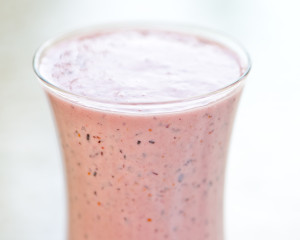 Earlier this week the U.S. Preventive Services Task Force released new recommendations regarding calcium supplements. They are recommending AGAINST daily supplementation with 400 IU or less of vitamin D3 and 1,000 mg of calcium carbonate for healthy older women, stating that it doesn’t work to prevent bone fractures in post-menopausal women. However, they say that the data is insignificant to make recommendations for larger doses of these supplements or for younger women or men. See the statement here:
Earlier this week the U.S. Preventive Services Task Force released new recommendations regarding calcium supplements. They are recommending AGAINST daily supplementation with 400 IU or less of vitamin D3 and 1,000 mg of calcium carbonate for healthy older women, stating that it doesn’t work to prevent bone fractures in post-menopausal women. However, they say that the data is insignificant to make recommendations for larger doses of these supplements or for younger women or men. See the statement here:
http://www.uspreventiveservicestaskforce.org/bulletins/vitdbulletin.pdf
The National Osteoporosis Foundation responded by encouraging all individuals to get the recommended amounts of calcium and vitamin D to protect their bone health. They especially urged people not to stop taking supplements they are currently taking without checking with their health care provider first. http://www.nof.org/news/903
After reading these documents I understand why consumers and educators alike are confused about this issue. There is an excellent article on diet and osteoporosis here in our CPE library and it is very clear that osteoporosis prevention is more about a healthful diet than supplements. The author of that article, Dr. James J Kenney, PhD, FACN, agrees with the US Preventive Services Task Force, “I’ve long believed that calcium supplements and low doses of vitamin D are largely useless so I have no real problem with that recommendation change.”
One thing both groups did agree upon is that the best place to get the calcium needed for good bone health is from food. That’s all well-and-good if you like dairy products since they are the best food sources of calcium. But not everyone likes milk or can drink it. If you’re not a milk person, there are other food sources of this important mineral. Some may surprise you.
Take a look at what I found:
- Some green vegetables naturally have calcium. One cup of broccoli contains about 75 milligrams of calcium. Other vegetables sources are collards and turnip greens. There are 226 mg. of calcium in a cup of cooked collards and 197 mg. in a similar amount of cooked turnip greens.
- For the record, an eight-ounce glass of 2% milk has about 297 mg. of calcium. So you’d have to eat about four cups of broccoli or a cup and one-half of greens to get the same amount of calcium as in a glass of milk.
- A quick note here. You may be thinking about spinach. It’s a green leafy vegetable; does it have calcium, too? No, sorry. Spinach, rhubarb stalks and beet greens are examples of foods that are high in a substance called oxalate. Foods with high amounts of oxalate reduce your body’s ability to absorb calcium. While spinach, rhubarb and beet greens can be part of a healthy diet for other vitamins and minerals, they are not good sources of calcium.
- Some other sources of calcium include seeds and nuts. One ounce (about a ¼ of a cup) of almonds has 75 milligrams of calcium. The same amount of sesame and sunflower seeds has 37 mg. and 33 mg. respectively.
- Another surprising source: figs. Ten dried figs provide 270 mg. of calcium. But use some care here, they are also loaded with sugars. Those ten figs provide about 477 calories. I checked the Nutrition Facts label on fig cookies. Yes, they do contain some calcium. Two Fig Newtons have 6% of the Daily Value of calcium. That’s about 60 mg. That’s not a great source, but it’s better than nothing and every little bit adds up.
- There are also calcium-fortified non-dairy foods that may be helpful. These include orange juices, breakfast foods, soymilk, cereals, snacks and breads. Even some bottled water contains calcium.
It is important for children to have a healthy diet. In children, the growth of new bone exceeds bone breakdown. During this stage of life the osteoblast create new bone faster than the osteoclasts are breaking it down. Around age 30 most people attain what is called peak bone mass. By age 40 the activity of the osteoblasts starts to slow down to the point where new bone formation falls behind the breakdown of old bone by the osteoclasts. It is primarily the drop in osteoblast cell activity with age that sets the stage for osteoporosis. The result is that bone mass starts to decline in all people with increasing age.
Try smoothies for snacks and desserts. A combination of skim milk and fresh fruit is just like ice cream.
Cheryle Jones Syracuse, MS
Professor Emeritus, The Ohio State University
Here is the NutritionEducationStore.com show on Osteoporosis, updated with the new guidelines:
New Products Available Now
Check out the Nutrition Nuggets page which features over 20% off three special products each week.
Connect with us on Google Plus
















